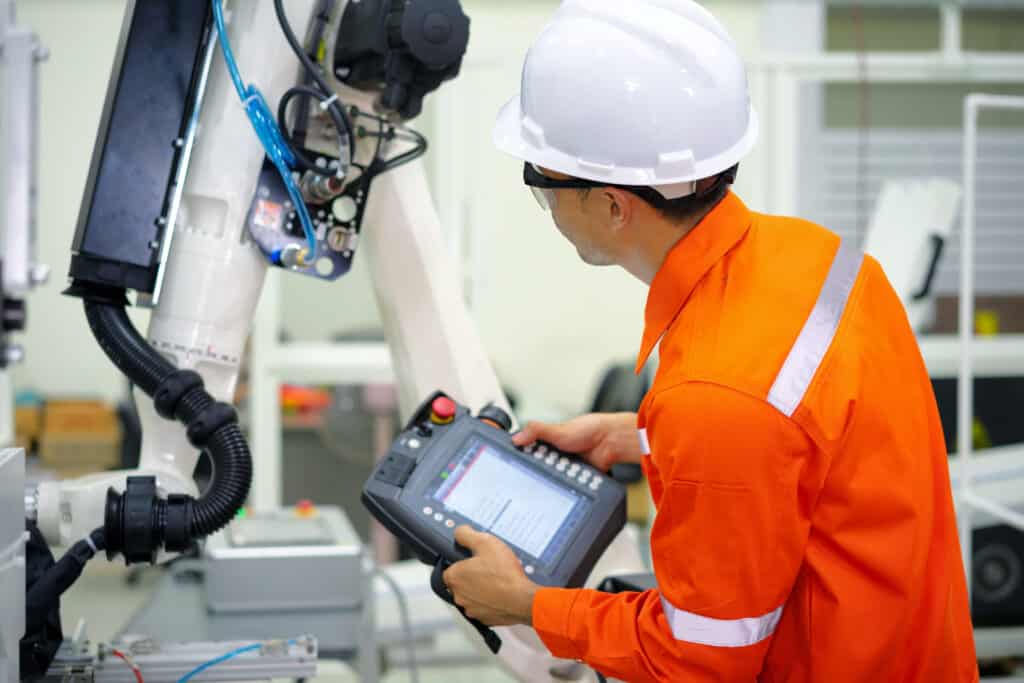The COVID-19 pandemic has revealed some hard business truths, one of them being that speed and agility are crucial for survival. Within the manufacturing sector, successful organizations have recognized they need to up their digital game in order to maintain their competitive advantage in this fast-changing world.
For many companies, implementing a digital operating system (DOS) that embraces the tenets of lean manufacturing is key to their sustainable transformation.
Simply put, a digital operating system is an advanced production system that converges lean and digital for superior supply chain operations. Traditional corporate production systems emphasize continuous improvement (CI) to achieve greater efficiency and better business results. The principles of CI focus on integrating people, practices and processes to create a seamless system that delivers a superior performance. To-date, this lean-based approach has served many high-performing organizations well.
However, Gartner’s Hype Cycle for Manufacturing Operations Strategy 2020 report by Simon Jacobson states that familiar lean-focused systems such as world-class manufacturing (WCM), Total Production System (TPS) and total quality management (TQM) are limited with regards to helping organizations adapt to changing market conditions. The report explains that these systems are not equipped to leverage new technologies like AI and deep machine learning which enable the necessary speed and agility required for a transformative, technology driven evolution.
How to unlock the power of a digital operating system
Those manufacturers with a sharp eye on the future realize that making a digital shift is no longer an option but a necessity. Now, as the dust of the pandemic somewhat settles, these organizations have an opportunity to maximize the intersection of lean and digital in their operations. It is a pivotal moment that demands action and will determine companies’ fortunes. The question for many leaders and decision-makers is how to reconfigure their production systems and supply chains for digital success.
To evolve into the factories of the future, manufacturing organizations require strategic reconfigurations to unlock their digital potential. Here are six priority focus areas that are key to implementing a successful digital operating system strategy.
1. Build a lean foundation
A successful shift to a DOS requires a solid foundation of lean principles, leadership skills and interdepartmental collaboration. Before embarking on digital transformation, the organization needs to demonstrate its commitment to CI with lean programs in action throughout the business. An organization driven by an embedded ethos of think lean, do lean, has the requisite foundation upon which to build a digitally driven culture.
2. Assess organizational levels of digital maturity
Before introducing new technologies, an organization must determine its existing digital capabilities and identify the gaps between its current state and its desired goal. By assessing the company’s level of digital maturity, leaders can develop a CI road map that addresses any shortfalls with relevant, well-paced technological implementation.
3. Choose the right technologies
To unleash the full potential of a digital operating system, organizations must harness the powers of the most relevant technologies for their business needs. Given the sheer volume of available options, choosing the right technology is understandably a challenging task. Thus, a considered approach that is led by a high-level strategy and a strong leadership core is crucial. First and foremost, companies need to review their IT architecture to ensure that digital is embedded throughout the organization. A siloed IT architecture will undermine any attempts at digital transformation.
4. Adopt an integrated approach to improving performance
An integrated approach to digital transformation enables a far swifter and more sustainable adoption of a DOS. To achieve improved production performance and supply chain operations, a digital operating system must be implemented across all regions, departments and levels of the organization. People, practices and processes need to be aligned and united in their efforts to build a functional digital culture.
5. Train employees in digital skills
A DOS implementation strategy requires that all employees are digitally skilled. Empowered employees help drive a truly functional digital culture that is geared for continuous improvement. To enable consistent, company-wide upskilling, organizations need to put HR structures in place that focus on developing employees’ digital capabilities in line with the digital operating system’s requirements.
6. Involve all employees in the digital transition
Implementing a successful digital transformation requires people’s buy-in. The convergence of new technologies with lean production systems is often challenged by a lack of employee engagement. Sustainable transformation will only happen when the entire organization is aligned with the business’ digital objectives and united in achieving them. Leadership, teamwork, communication, clarity and transparency are all key to ensuring vital cultural and organizational convergence.
These six focus areas provide organizations with guiding principles for a successful and sustainable digital transformation journey. Implementing a digital operating system that advances existing corporate production systems is not without its challenges – but it is vital for longevity. To evolve into a factory of the future that is built on speed and agility requires a lean, strategic and digitally savvy approach. By eliminating departmental and regional siloes, harnessing the right technologies, involving and upskilling employees and investing in CI, manufacturers will improve their operational excellence and strengthen their competitive advantage.
Download the white paper Digital operating systems: The next generation of production systems to unlock new levels of productivity and innovation throughout your organization.


